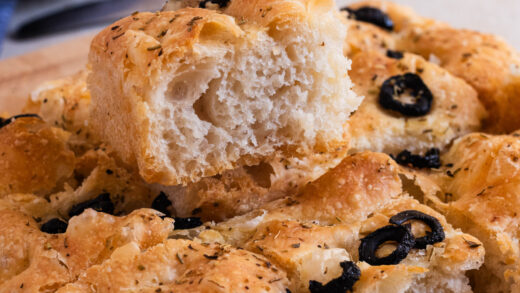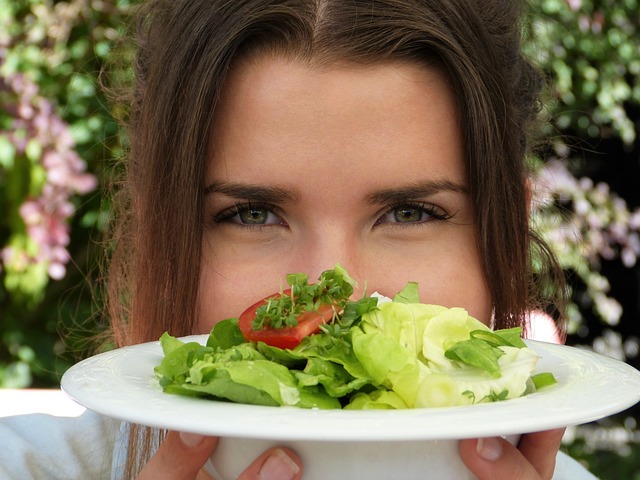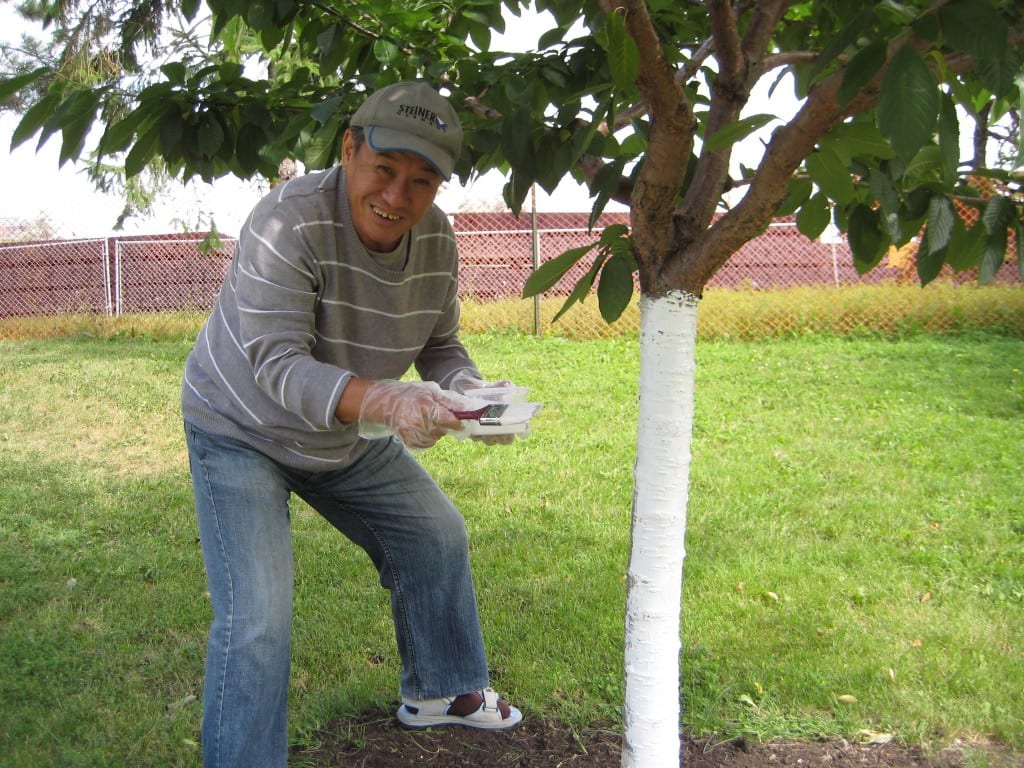
As winter approaches, fruit tree growers gear up to prepare their trees for the cold. Unprotected fruit trees are vulnerable to frost damage, which can harm or even kill them. In this article, we’ll delve into the main challenges fruit trees face during winter and learn how to prepare our fruit trees for the cold months ahead. We’ll cover root, branch, and bark protection during the autumn season.
So, let’s dig in!
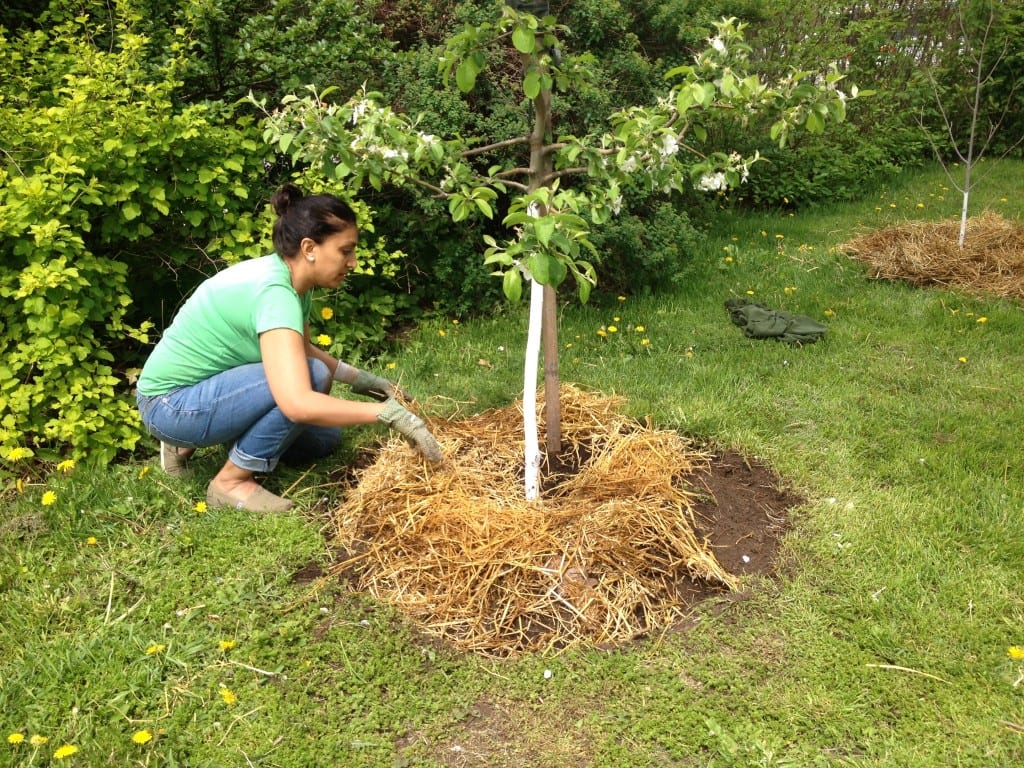
Preparing fruit trees for winter: Insulating root systems
Insulating fruit tree root systems is a crucial aspect of preparing fruit trees for winter. Our goal is to protect the tree’s delicate feeder roots, also known as root hairs, from freezing temperatures. These fine roots are responsible for absorbing water and essential nutrients from the soil. In cold weather, freezing can cause these feeder roots to die, hampering the tree’s ability to take in moisture and nutrients, and that can lead to tree stress. In extreme situations, an affected tree can even die as a result.
Protection: To insulate the root system, apply a layer of mulch around the base of the tree. Mulching serves as a protective barrier against winter cold, shielding the feeder roots. There are various mulch options available, such as wood chips or straw, each with its pros and cons. But, avoid using compost or rotted manure in the fall, as these nutrient-rich mulches can stimulate the tree’s growth, potentially delaying dormancy.
Preparing fruit trees for winter: protecting the trunk
Protecting the tree trunk from winter sun scald is important because it prevents temperature-induced damage, particularly on the southwest side of the tree where it gets the most light. The science behind this practice is rooted in understanding how temperature fluctuations can affect the tree. During the day, sunlight warms the tree’s trunk, causing it to expand. But when the weather cools rapidly at nighttime, the bark will contract quickly.
When the bark becomes less flexible due to these fluctuations in temperature, it can develop cracks or splits, exposing the tree to cold and creating a wound that pests and disease pathogens can enter. If there is snow on the ground, this problem can get even worse! The snow will reflect and intensify sunlight, exacerbating these temperature fluctuations and increasing the risk of sun scald.
During the winter, young and newly planted trees are also vulnerable to wildlife damage! Rabbits and rodents, who have access to lots of food during the summer months, have less to eat during the winter. So the tender young bark of young fruit trees can be very tasty for them when the weather is cold.
Protection: To protect the tree from sun scald, you can paint the trunk with a mixture of 50% white latex paint (leftover house paint is fine) and 50% water. This white coating acts as a shield against winter sun damage. Alternatively, you can use white plastic spiral tree guards or wrap the trunk with kitchen foil and both of these approaches will also deter rabbit and rodent damage. Be sure to remove those plastic tree guards or the foil in the early spring though. Otherwise you may find insect pests breeding underneath!
Preparing fruit trees for winter: defend against insects and diseases
Fruit tree pests and diseases can seriously affect your tree’s health and productivity during the growing season. But the best time to prevent this from happening is in the fall. Insects and disease pathogens often overwinter in the fallen leaves and fruit underneath the tree’s canopy. By removing this habitat, you break the cycle, reducing the pest population and the potential for the spread of disease in the coming spring and summer.
Protection: To protect your fruit tree from overwintering pests and diseases, rake up all fallen leaves and fruit debris from under the tree’s canopy and take the leaves off the site. Don’t put this debris in your compost where the pests and pathogens will continue to thrive! This practice disrupts the habitat where insects and disease spores overwinter, preventing their resurgence in the growing season to come.
Preparing fruit trees for winter: continue irrigating in the fall
Watering fruit trees well in the fall is an essential step in preparing your fruit trees for the winter because water plays a critical role in tree health and winter survival. Fruit trees can only absorb nutrients in liquid form, making hydration necessary so that the tree can take in and store nutrients in its roots.
In addition, well-hydrated fruit trees are less likely to sustain winter damage. If your trees’ cells are filled with water, that water acts as a natural insulator, preventing cell walls from rupturing when exposed to freezing temperatures.
Protection: To ensure proper hydration, continue to water fruit trees until a few weeks before the ground freezes. This practice allows the trees to build up nutrient reserves for winter storage in the roots. Monitoring soil moisture and adjusting watering frequency accordingly is essential. You will stop watering fruit trees well in advance of freezing temperatures to prevent ice formation on the roots.
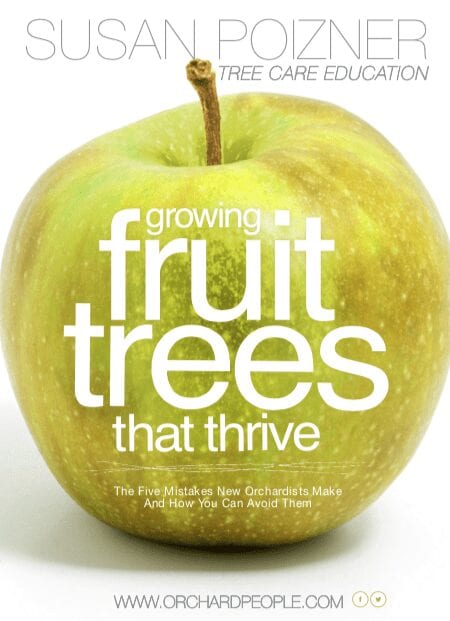
Fruit Tree Care Newsletter
Sign up for our monthly newsletter and we will send you our eBook “Growing Fruit Trees That Thrive.” You can unsubscribe at any time.
Preparing fruit trees for winter: avoid fall pruning
When it comes to fruit tree pruning, your timing makes all the difference. And while pruning in the late winter and spring are often beneficial for fruit trees, fall pruning can be very damaging. That’s because any pruning cuts will create wounds in the tree. But, during the growing season, protective cells develop over these wounds to aid healing.
In this fall, however, tree growth slows, and these protective cells do not form as effectively. Also, fall pruning can stimulate new growth in the tree, and if this growth is not sufficiently hardened by winter, it becomes vulnerable to frost damage, leading to potential wounds on the tree which again will serve as a handy place for insect pests to hide or where disease pathogens can enter the tree.
Protection: The best practice is to refrain from pruning fruit trees in the fall. Instead, focus on pruning during the dormant season or early spring when the tree can heal more effectively and new growth is less susceptible to frost. By avoiding fall pruning, you reduce the risk of creating wounds and ensure your fruit trees are better prepared for winter without potential vulnerabilities.
Is wrapping fruit trees for the winter necessary?
Most fruit tree species are naturally hardy and they have evolved to endure various environmental conditions, including cold winters. For instance, there are some winter hardy apples can be grown in very cold climates and that can adapt to seasonal temperature changes. And unlike some ornamental or evergreen trees, most fruit trees have robust bark and wood that can withstand winter’s challenges. The most important thing to consider is that you purchase a fruit tree that is well adapted to your specific climate and you can learn more about that in the Orchard People course Researching Fruit Trees for Organic Growing Success.
Protection: In most cases, fruit trees do not require wrapping for winter protection.
Protecting your fruit tree for winter helps ensure a healthy harvest in the year to come
For any responsible grower, preparing your fruit trees for winter is an important seasonal task. We know that frost can be a formidable foe, but with proper preparation, our trees can withstand the chill. With a little help from us, those trees will make it safely through the winter and be ready to produce a wonderful organic harvest for us in the growing season to come.
special considerations for preparing potted fruit trees for winter
If “in ground” fruit trees can be susceptible to winter damage, potted fruit trees are even more vulnerable! Trees in the ground are partially insulated in the soil. We are just protecting the roots in the top few inches of the soil because they are more exposed to the cold.
But potted fruit trees are popular in landscape design today and those trees need more help in terms of winter insulation. Here’s how you can protect them.

So, what is the solution? During a recent class on preparing your fruit trees for winter at Evergreen Brickworks in Toronto, we insulated and winterized the site’s potted fruit trees in three steps. Here are the tools we needed:
- A roll of chicken wire that’s about as high as the pot your fruit tree is planted in
- Wire cutters
- A bit of extra wire to seal the wire circle
- A bale of straw (not hay, because hay has seeds and can introduce weeds into your garden)
three steps to preparing potted fruit trees from winter damage
These are the steps for protecting an outdoor potted fruit tree from winter damage:
- Roll out the chicken wire in a circle around your pot, leaving about six inches of space between the chicken wire circle and the pot itself (as illustrated in the photograph above).
- Cut the chicken wire to size and secure the chicken wire. Used bits of extra wire to secure the circular chicken wire fence.
- Stuff the space between the pot and the chicken wire with straw. Put some straw at the top of the pot to insulate the soil from the top as well (as illustrated in the photograph below).

In the spring, when the weather starts to get warmer, you will remove the straw and the chicken wire. Spread the straw out in your vegetable garden or around fruiting trees and shrubs that are planted in the ground. It will now act as nutritious mulch that helps retain moisture in your soil and slowly decomposes, releasing valuable nutrients into the soil. Save the chickenwire so that you can use it to insulate your potted tree next year.
Interested in learning more about how to grow organic fruit trees successfully? Check out my premium online courses at Learn.OrchardPeople.com.

#Preparing #fruit #trees #winter #easy #steps

